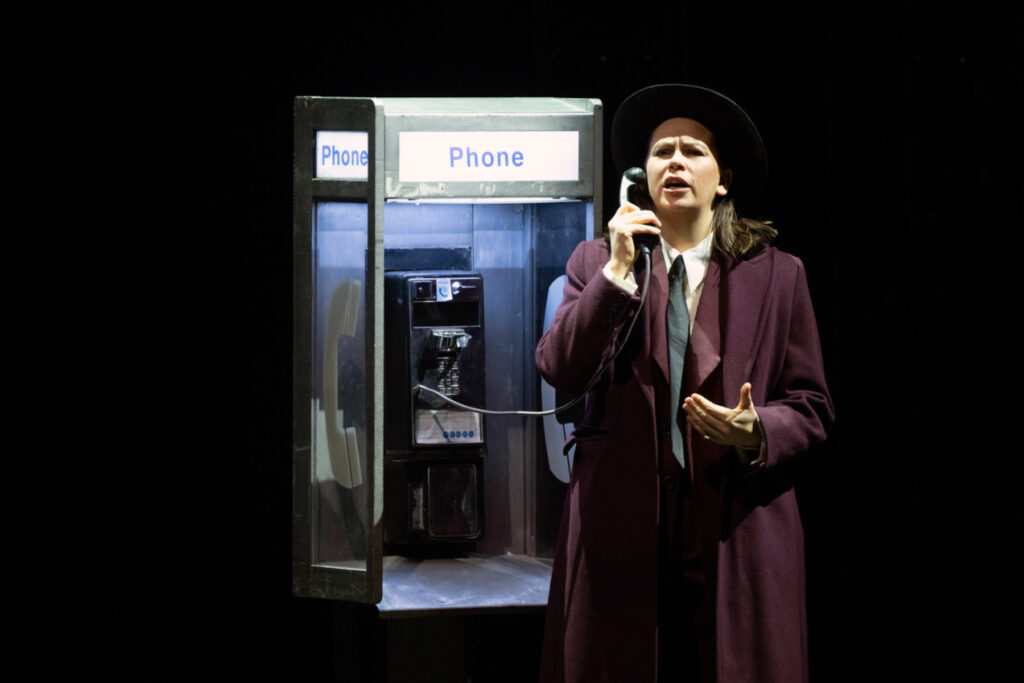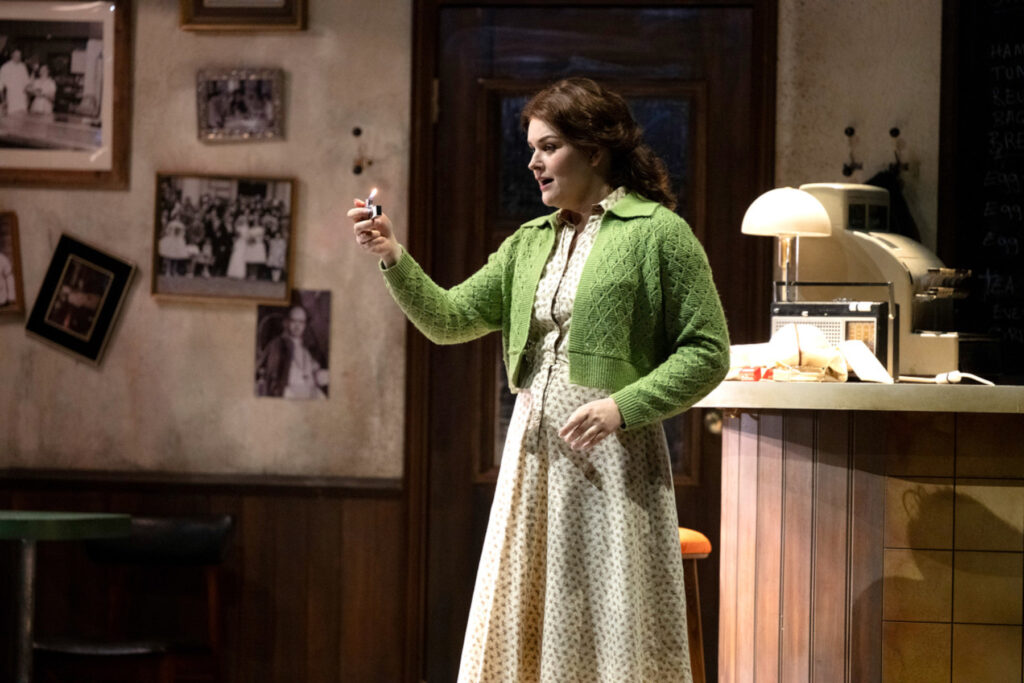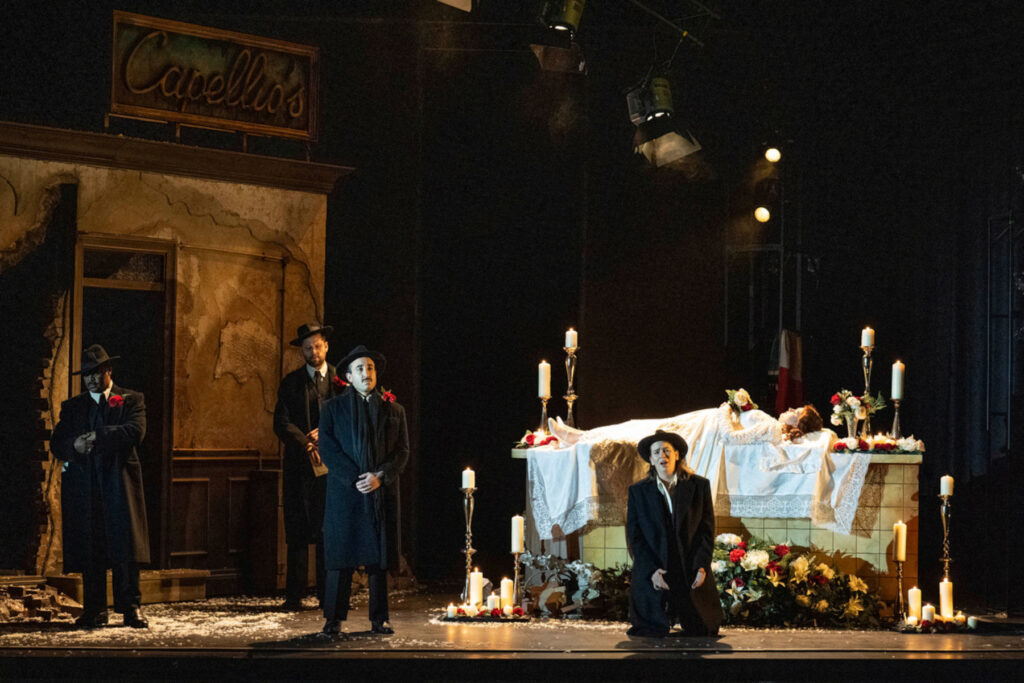You can take the same basic idea with all its dramatic potential, but don’t ever expect it always to turn out successful, even though you adhere to the same basic storyline. Dozens of operatic composers have tried their hand at perhaps the greatest love story of all time, that of Romeo and Juliet, but very few have made the grade. Bellini did in 1830 and Gounod did a generation later, but apart from these two and the much more recent reworking by Bernstein, that’s about it. What looks easy is so often fiendishly difficult in practice.
Some misconceptions about Bellini’s opera need to be dispelled. It is in many respects quite different from Shakespeare’s play because the composer’s libretto draws on a narrative account by Matteo Bandello. There is no festive ball to kick things off, no balcony scene, no nurse to comfort Juliet, no Benvolio or Mercutio, no duel between Romeo and Tybalt leading to the latter’s death. The “Capuleti” of the title dominate proceedings on stage; the only named “Monteccho” is Romeo. This would normally have led to a lopsided operatic version with only one female voice, that of Giulietta, so Bellini’s Romeo is a trouser role, sung by a lyric mezzo and designed to complement the coloratura soprano of Giulietta. Lorenzo has only a fleeting resemblance to Friar Laurence: his role is that of a doctor and retainer of the Capulets (“medico e famigliare”), though he still works as an intermediary for the star-crossed lovers.

Further adjustments and allowances need to be made in Eloise Lally’s new production for English Touring Opera, which transfers the action from a medieval Verona to Little Italy in the New York of the 1970s. Lally’s inspiration comes in part from the photographic records of Letizia Battaglia in documenting the activities of the Sicilian Mafia. Act 1 is set in a diner cum bar, black-and-white photographs on the back wall together with a menu board, a counter which also does duty as a catafalque for Giulietta in Act 2, and minimal seating. Outside the diner, which in the second act advertises itself in a neon-illuminated sign as Capellio’s, there is a public phone booth that requires no coins to be successfully operated. An ensemble of seven men represents the full might of the Capulet gangster empire, all nicely suited and booted. No, they don’t remotely look like hoodlums, but then the members of the Baader-Meinhof gang from the same period deliberately dressed in bourgeois fashion in order to blend in with the populace without arousing suspicion. Giulietta is onstage from the start, looking like a typical barmaid, and must have been listening to Donna Summer’s “I will survive”, since right at the very end she walks away from it all.

At the heart of the conflict between Capulets and Montagues is a turf war, in which everyday violence is systemic. But though Capellio’s men frequently brandish their firearms, they otherwise seem quite tame, with little or no displays of gratuitous cruelty. We are led to believe that Giulietta is a victim of coercive control, very much under her father’s thumb, who tells his men at one point: “Be assured that Giulietta will bend to my will.” In her exchanges with Romeo she in turn makes clear that she is bound by a sense of duty and honour that prevents her following his entreaties for them to escape together.
The staging of Act 2 is less persuasive. Here we are outside the Capellio establishment in what appears to be a war zone: a huge hole has been blown into the outside masonry and there are surrounding piles of rubble. At what point does the Capulet gang turn from targeted killing to urban terrorism involving the detonation of bombs? Giulietta looks like a refugee from cardboard city; had the Capulets not considered the need for safe houses? Her “funeral”, however, is visually impressive, a flurry of snowflakes descending from the sky as the coffin covered in floral tributes is borne aloft, and when she later lies in state, she is surrounded by a dozen flickering candles. The physical confrontations between Tebaldo and Romeo degenerate into farce, each proffering the other a gun for the purposes of liquidation, at one stage drinking alcohol from glasses in a seeming act of brotherhood, before Tebaldo offers Romeo a small bottle of poison from which he later drinks. These are not signs of naked machismo.

In order to obviate a feeling of stasis, modern directors have a habit of “doing stuff” which may or usually may not have dramatic relevance. Romeo, in disguise as an envoy from the Montagues, uses the phone booth to parley with his opponents. Capellio, at the other end of the line in the diner, therefore carries on a two-way conversation without the involvement of his “ensemble” of men. Lorenzo, kitted out in a chef’s hat for Act 1, spends an inordinate amount of time raising and then lowering the blinds in the diner, irrespective of the actual time of day. Before the final scene of Act 2, and in front of the curtain, he hands out an order of funeral service to a few select mourners. A roving football makes a number of appearances throughout.
It is difficult to explain the comparative neglect of this Bellini opera, for in the two leading characters there is huge scope to display all the characteristics of bel canto singing with many a florid line. I was struck too by the imaginative way in which the composer handles his orchestra. Each scene is prefaced with exquisite mood painting, the kind that Puccini later copied. Important solos are given to the horn, the cello at the start of Act 2, and in the second scene of that act to an extended one for the clarinet, where the influence of Mozart’s concerto is most palpable. Not the least of the striking instrumental detail are the specific colours provided by piccolo and harp. In charge of musical proceedings was Alphonse Cemin. He took care never to cover his singers and was attentive to dynamic markings, frequently paring the sound down to a mere whisper. However, in the overture and later too I frequently missed the fizzing and sizzling strings, the sparkle which is so characteristic of Italianità.
Brento Spiteri sang a very spirited Tebaldo. He negotiated the high-lying tessitura with ease in his opening cavatina, “È serbata a questo acciaro”, in which he declares his determination to avenge the killing of Capellio’s son by Romeo, though the top line was a little on the thin side, with rather more body in the lower baritonal reaches. His “presentimento horribile”, just before the appearance of Giulietta’s coffin, had a chilling quality to it. As Capellio, Timothy Nelson’s warm baritone allowed for many instances of irascibility, but the Lorenzo of Masimba Ushe remained somewhat characterless. He needed to be more forthright in his exchanges with the two lovers.
The two stars of this performance were exceedingly well matched. Romeo as sung by Samantha Price was often feisty in demeanour, and the urgency of his appeals to Giulietta was strongly conveyed. His aria “Deh! tu, bell’anima”, sung in grief at Giulietta’s tomb, was particularly affecting. Price made full use of her mezzo range, with rich chest tones and a gleaming edge to the florid elements in her upper register. Jessica Cale’s Giulietta was Price’s equal in vocal expressiveness, manifesting all the emotional conflict inherent in the role and impressing with the security of her coloratura lines. She sang a powerful duet with Romeo in the second scene of Act 1, “Si, fuggire: a noi non resta”, and filled her Act 2 cabaletta “Ah non poss’io partire”, where she begs for her father’s forgiveness, with tender pleas.
The modern world is no less violent than the medieval one. Inter-communal strife remains a feature of many urban communities. In Shakespeare’s words, “The course of true love never did run smooth”, and through the operation of external factors conflict sometimes ends in deep personal tragedy. Above all, women still struggle to make their voices heard in a world frequently dominated by the exercise of male power. Both Shakespeare’s play and its many ensuing reworkings together with Bellini’s opera provide much food for thought.
Alexander Hall
I Capuleti e i Montecchi
Opera in two acts with a libretto by Felice Romani
Music by Vincenzo Bellini
Sung in Italian and with English surtitles
Cast and production staff:
Giulietta – Jessica Cale; Romeo Samantha Price; Tebaldo – Brenton Spiteri; Capellio – Timothy Nelson; Lorenzo – Masimba Ushe; Ensemble: Daniel Gray Bell, Harry Grigg, Tamsanqa Tylor Lamani, Samuel Pantcheff, John Ieuan Jones, Wonsick Oh, Jonah Halton
Director – Eloise Lally; Assistant Director – Emily Louizou; Assistant Director (Touring) – Molly Harris Farley; Designer – Lily Arnold; Lighting Designer – Peter Harrison; Fight Director – Kaitlin Howard; Movement Director – Carmine de Amicis; Répétiteur – Nicholas Bosworth; Orchestra of English Touring Opera; Conductor – Alphonse Cemin
Hackney Empire, London, 22 February 2025
Top image: Brenton Spiteri (Tebaldo), Jessica Cale (Giulietta) and cast.
Photos © Richard Hubert Smith
Further venues and performances until 26 April